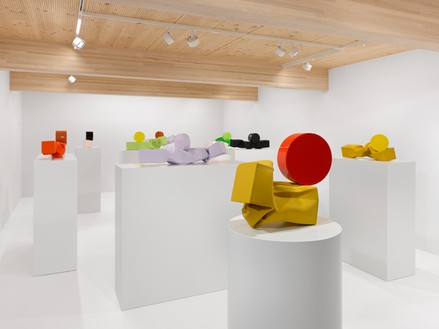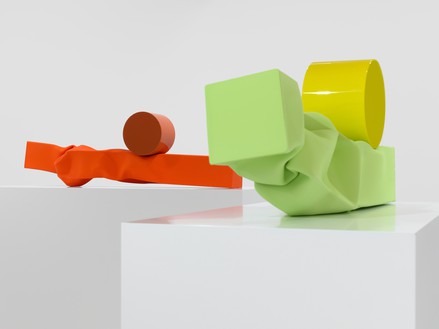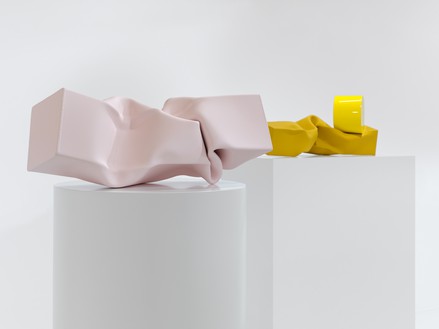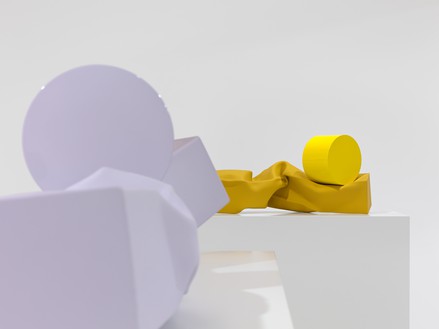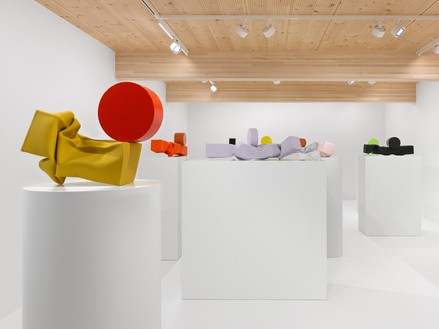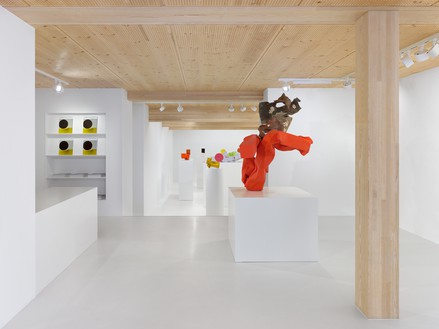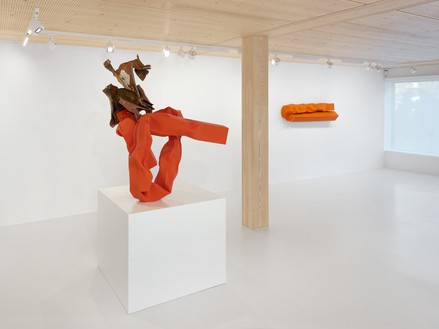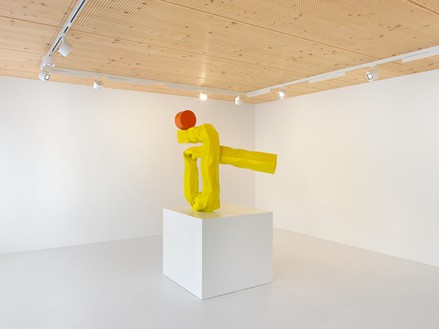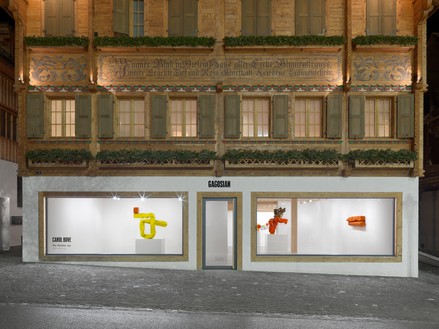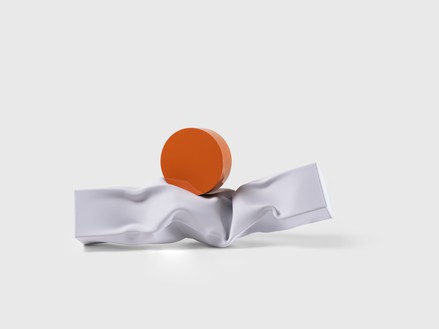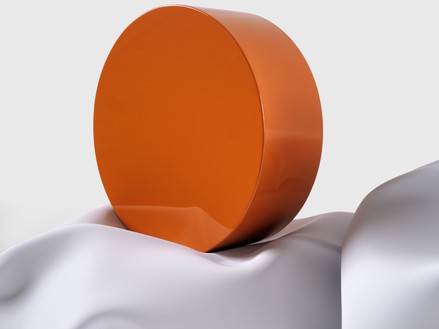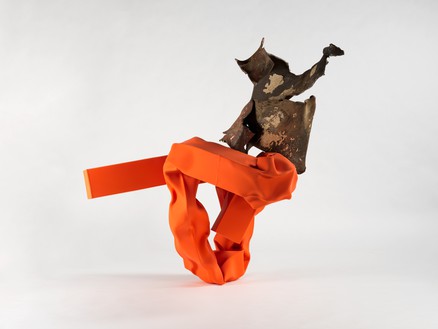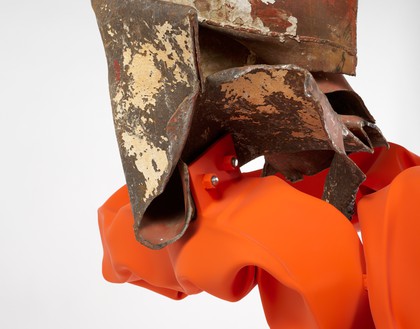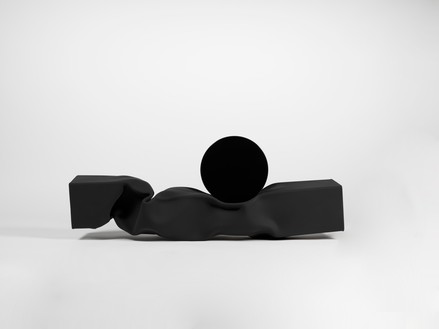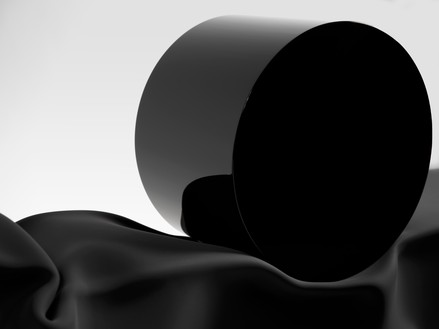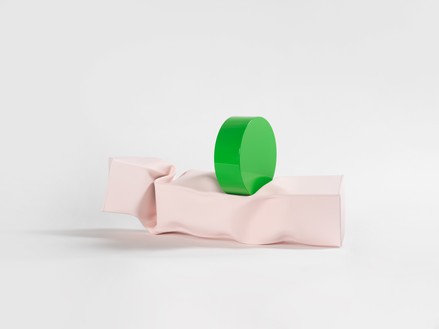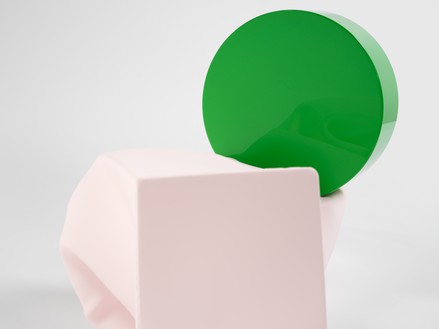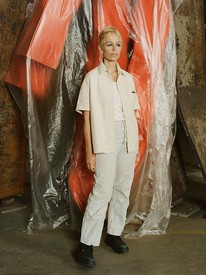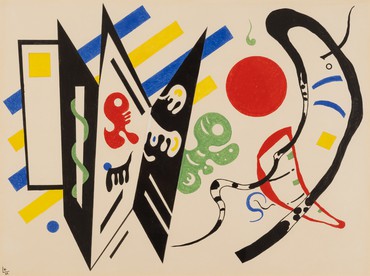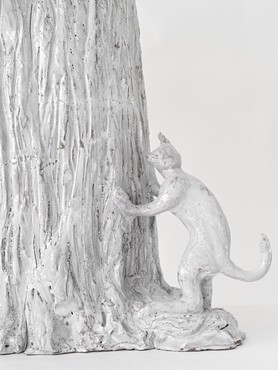About
It’s perverse to be working in formalist abstraction, but there’s actually a lot more space in there than I thought possible, and finding that space is a way of opening the world.
—Carol Bove
Gagosian is pleased to announce the opening of The Machine Age, an exhibition of new sculptures by Carol Bove. This is the artist’s first exhibition at the gallery in Gstaad and her second with Gagosian, following her debut, Hardware Romance, at Park & 75, New York, in 2023.
Since the early 2000s, Bove—who was born close to Gstaad, in Geneva—has focused on the interdependence of artworks and their contexts. A poetic use of artifacts and materials ranging from found objects to industrial hardware, along with an acute awareness of architectural sites and modes of display, continues to steer her practice. Embracing the strategies of modernist formalism as a point of departure, Bove’s recent metal sculptures explore previously overlooked openings in the conventional narrative of art history, their appropriated titles adding further layers of reference.
Es ist pervers, abstrakt-formalistisch zu arbeiten, doch bietet der abstrakte Formalismus viel mehr Raum als ich erwartet hätte, und sich diesen Raum zu erschliessen ist eine Möglichkeit, sich die Welt zu erschliessen.
—Carol Bove
Gagosian freut sich, die Ausstellung neuer Skulpturen von Carol Bove unter dem Titel The Machine Age anzukündigen – ihre erste in der Galerie in Gstaad und ihre zweite bei Gagosian, nachdem sie 2023 mit Hardware Romance in der Galerie Park & 75 in New York ihre Premiere hatte.
Bove, die in Genf unweit von Gstaad geboren wurde, stellt das Wechselspiel zwischen den Kunstwerken und ihrem Umfeld seit Beginn der 2000er-Jahre in den Mittelpunkt ihres Schaffens. Massgebend sind dabei weiterhin die poetische Verwendung von Artefakten und Materialien, die von Fundstücken bis Metallwaren reichen, sowie ihre ausgeprägte Sensibilität für das bauliche Umfeld und das Ausstellungsdesign. Ausgehend von den Strategien des Formalismus der Moderne lotet Bove in ihren jüngsten Metallskulpturen bisher übersehene Zwischenräume im konventionellen Narrativ der Kunstgeschichte aus, eignet sich Werktitel an und schafft so zusätzliche mehrschichtige Bezüge.
The Machine Age zeigt eine Werkgruppe von abstrakten Skulpturen, bei denen zerdrückte Stahlröhren auf hochspiegelnde, perfekt polierte, geschlossene Stahlzylinder treffen. Die Mattlackbemalung der Röhren schafft die trügerische Illusion von Leichtigkeit und Verformbarkeit. Die Röhren sind durchsetzt von grossen, glänzenden, tupfenartigen Zylinderkreisen, die unterschiedlichste Stilrichtungen wie Art Deco, Memphis und Minimalismus anklingen lassen. Die erratischen Formen und gehärteten Oberflächen verleihen den Skulpturen etwas Anthropomorphes und suggerieren einzelne zurücklehnende Figuren oder Paare in erotischen Stellungen. Das Ausstellungsdesign nutzt spielerisch die beiden Stockwerke der Galerie und gibt so verschiedene Blickrichtungen auf die Werke frei.
Wohl lassen Boves neue Arbeiten Einflüsse von Künstlern wie John Chamberlain, John McCracken oder David Smith erkennen, doch knüpfen sie auch an die etwas in Vergessenheit geratene Tradition der «Plaza Art» an – so die liebevolle Bezeichnung für eine Variante der abstrakten Bildhauerei aus industriellen Werkstoffen aus den 50er-Jahren. Obwohl sie von der Kunstkritik zugunsten des Minimalismus mehrheitlich abgelehnt wurde, hat sie doch eine bleibende Spur im öffentlichen Raum hinterlassen. Auch wenn die Skulpturen von The Machine Age aus dem gleichen Metall – aus Stahl – geschaffen worden sind, verleiht die unterschiedliche Oberflächenbehandlung jedem Element einen eigenen Charakter. Das zwingt die Betrachterinnen und Betrachter, sich von ihren Vorstellungen der «inhärenten» Eigenschaften von vertrauten Werkstoffen zu lösen und vielleicht den Stellenwert des Verhältnisses von Plaza Art zur individuellen Subjektivität zu rehabilitieren.
Die Farbpalette von Boves Skulpturen stammt teilweise aus bestehenden Werken. In ihrem Essay im Katalog der Ausstellung von 2021–2022 Carol Bove: Collage Sculptures im Nasher Sculpture Center in Dallas verweist die Kuratorin Catherine Craft auf chromatische Parallelen zwischen Boves Werken und jenen anderer Künstler – Maler und Bildhauer – wie Alexander Calder, Willem de Kooning und Donald Judd. Während ihrer Arbeit am Projekt The Machine Age setzte sich Bove intensiv mit dem Werk des französischen symbolistischen Maler Odilon Redon (1840–1916) auseinander, der in seinen Bildern das Ausserirdische durch eine Kombination aus schrillen Farbtönen und verwischter Pastellkreide verstärkt. Indem Bove ihre Skulpturen auf massgeschneiderten weissen Sockeln montiert, spielt sie frei mit solchen Assoziationen und verstärkt gleichzeitig den visuellen Bezug der Skulpturen untereinander und zum Galerieraum. So entsteht der Eindruck, dass sie sowohl in der erfahrbaren äusseren Welt als auch im Reich der Vorstellungskraft und Fantasie verankert sind.
Travailler dans l’abstraction formaliste est pervers, mais il y a en fait dans celle-ci bien plus d’espace que je pensais et trouver cet espace est une façon d’ouvrir le monde.
—Carol Bove
Gagosian a le plaisir d’annoncer l’ouverture de The Machine Age, une exposition de nouvelles sculptures de Carol Bove. Il s’agit de la première exposition de l’artiste à la galerie de Gstaad et sa seconde chez Gagosian, après celle à Park & 75, New York en 2023 avec Hardware Romance.
Depuis le début des années 2000, Carol Bove, née à Genève non loin de Gstaad, s’est focalisée sur l’interdépendance entre les créations artistiques et leurs contextes. L’utilisation poétique d’artéfacts et de matériaux, qui vont d’objets récupérés jusqu’à la quincaillerie industrielle, imprégnée d’une conscience aiguë des sites architecturaux et des modes de représentation, continue à diriger sa pratique. En adoptant les stratégies du formalisme moderniste comme point de départ, les sculptures métalliques récentes de Carol Bove explorent des brèches, oubliées auparavant, dans la conception conventionnelle de l’histoire de l’art, les titres qu’elle s’est appropriés ajoutant des niveaux supplémentaires de référence.
The Machine Age montre un ensemble de petites sculptures abstraites qui juxtaposent des tubes tordus en acier et des cylindres fermés hautement réfléchissants, parfaitement aboutis, réalisés dans le même matériau. La peinture de finition matte en uréthane des tubes donne à ces formes une impression trompeuse de malléabilité et de légèreté, tandis qu’ils sont ponctués de cylindres faits de « pois » recourbés et brillants qui font allusion à des styles disparates incluant l’Art déco, Memphis et le Minimalisme. De même, les formes irrégulières de l’œuvre et ses surfaces trempées contribuent à mettre en valeur une qualité subtilement anthropomorphique en suggérant de simples figures inclinées ou, peut-être, l’union érotique d’un couple. L’agencement de l’exposition joue avec les deux hauteurs de la galerie pour permettre des points de vue différents.
En révélant l’influence d’artistes tels que John Chamberlain, John McCracken et David Smith, les nouveaux travaux de Carol Bove renvoient à la tradition oubliée du « Plaza Art », nom impertinent donné à une sous-variante de la sculpture abstraite du milieu du siècle produite à partir de matériaux industriels, rejetée par la plupart des critiques en faveur du Minimalisme, mais dont la présence publique reste indélébile. Bien que chaque sculpture de The Machine Age soit réalisée dans un seul type de métal, l’acier, les surfaces de ses composants sont traitées différemment et donnent un caractère propre à chacun de ses éléments. Cette contradiction incite les spectateurs à se questionner sur leur perception des qualités « inhérentes » des substances qui leur sont familières et, peut-être, à rétablir la valeur du parti pris du Plaza Art en faveur de la subjectivité individuelle.
Les palettes des sculptures de Carol Bove proviennent en partie d’un art qui existe déjà. Dans son essai pour le catalogue qui accompagne l’exposition Carol Bove : Collage Sculptures au Nasher Sculpture Center de Dallas en 2021–2022, la curatrice Catherine Craft montre les résonances chromatiques entre les œuvres de Carol Bove et celles d’autres artistes, notamment de sculpteurs et de peintres comme Alexander Calder, Willem de Kooning et Donald Judd. En travaillant sur The Machine Age, Carol Bove s’est trouvée absorbée dans l’œuvre d’Odilon Redon, peintre symboliste français (1840–1916), qui a utilisé une combinaison de teintes âcres et de pastels délavés conçue pour mettre en valeur l’aura surnaturelle de ses compositions. En installant ses sculptures sur des socles blancs fabriqués sur mesure, Carol Bove permet de donner libre cours aux associations tout en renforçant les relations visuelles entre elles et l’intérieur de la galerie ; elle suggère un enracinement à la fois dans le monde que l’on peut observer et dans le royaume de l’intellect et de l’imagination.
